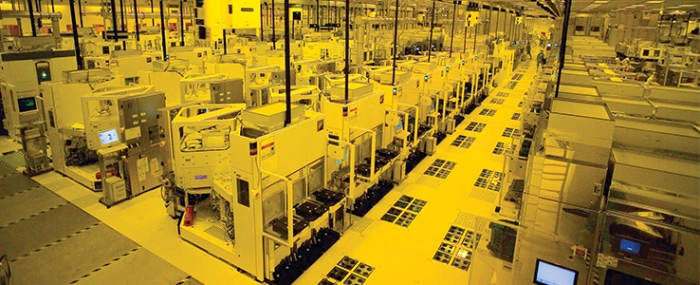
Mature process capacity to grow 6% in 2025
According to TrendForce's investigations, China's domestic IC substitution policies will allow Chinese foundries to account for the majority of the expansion in mature process capacity in 2025. Despite ongoing price pressure, the top 10 mature process foundries globally are expected to have a 6% rise in capacity by 2025.
TrendForce noted that the demand for advanced and mature processes is showing a clear divergence. The 5/4 nm and 3 nm nodes, driven by AI servers, PC/notebook HPC chips, and new smartphone SoCs, will see full capacity utilisation through the end of 2024. In contrast, mature nodes of 28 nm and above are experiencing only a moderate recovery, with average capacity utilisation increasing by 5% to 10% in the second half of this year compared to the first.
Ensuring regional capacity has become a key issue, especially as many end products and applications continue to rely on mature processes for peripheral IC production and geopolitical factors drive supply chain diversification. This is spurring the global expansion of mature process capacity. Major capacity expansion plans for 2025 include TSMC’s JASM fab in Kumamoto, Japan, as well as SMIC’s fabs in Lingang (Shanghai), Beijing, HuaHong Group’s Fab9 and Fab10, and Nexchip’s N1A3.
Shipments in smartphone, PC/notebook, and server markets – including general-purpose and AI servers – are expected to recover and show year-over-year growth in 2025. Additionally, the automotive and industrial control sectors, which will have completed their inventory corrections throughout 2024, are expected to see a resurgence in demand supporting utilisation rates in mature process capacity.
However, there are still concerns surrounding the global economic outlook and China’s recovery. End-device brands and upstream clients remain cautious in placing orders, resulting in short-term visibility of just one-quarter for mature process orders. This leaves the outlook for 2025 uncertain. TrendForce forecasts that the capacity utilisation rate for the top 10 global foundries’ mature processes will increase slightly to over 75% next year.
TrendForce highlighted that as new capacity from China comes online, Chinese foundries’ share of mature process capacity among the top 10 is expected to exceed 25% by the end of 2025. The highest increases will be seen in 28/22 nm production. Chinese foundries are also advancing their specialty process technologies, with the HV platform in particular expected to lead, and 28 nm already in mass production as of 2024.
Looking ahead to overall pricing trends in 2025, mature process pricing is expected to remain under pressure due to average capacity utilisation remaining below 80% and new capacity still needing orders to fill.
However, as pointed out by TrendFroce, Chinese foundries may exert more pricing leverage due to continued localisation efforts and the need for upstream clients to secure domestic capacity in China. This could help alleviate some of the downward pressure on mature process pricing, potentially stabilising prices after the corrections seen in 2H24 and creating a pricing standoff between supply and demand.
| Company | Fab | Technology node |
| TSMC | JASM | 28/22–16/12nm |
| SMIC | Jingcheng | 40–28nm |
| Oriental | 110–28nm | |
| HuaHing Group | Fab9 (HHGrace) | 55/40nm, Power discrete |
| Fab10 (HLMC) | 28/22nm | |
| Nextchip | N1A3 | 55/28nm |
For more information visit TrendForce.

